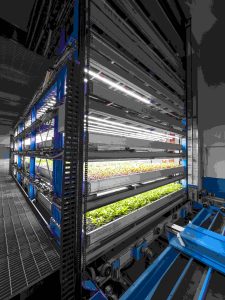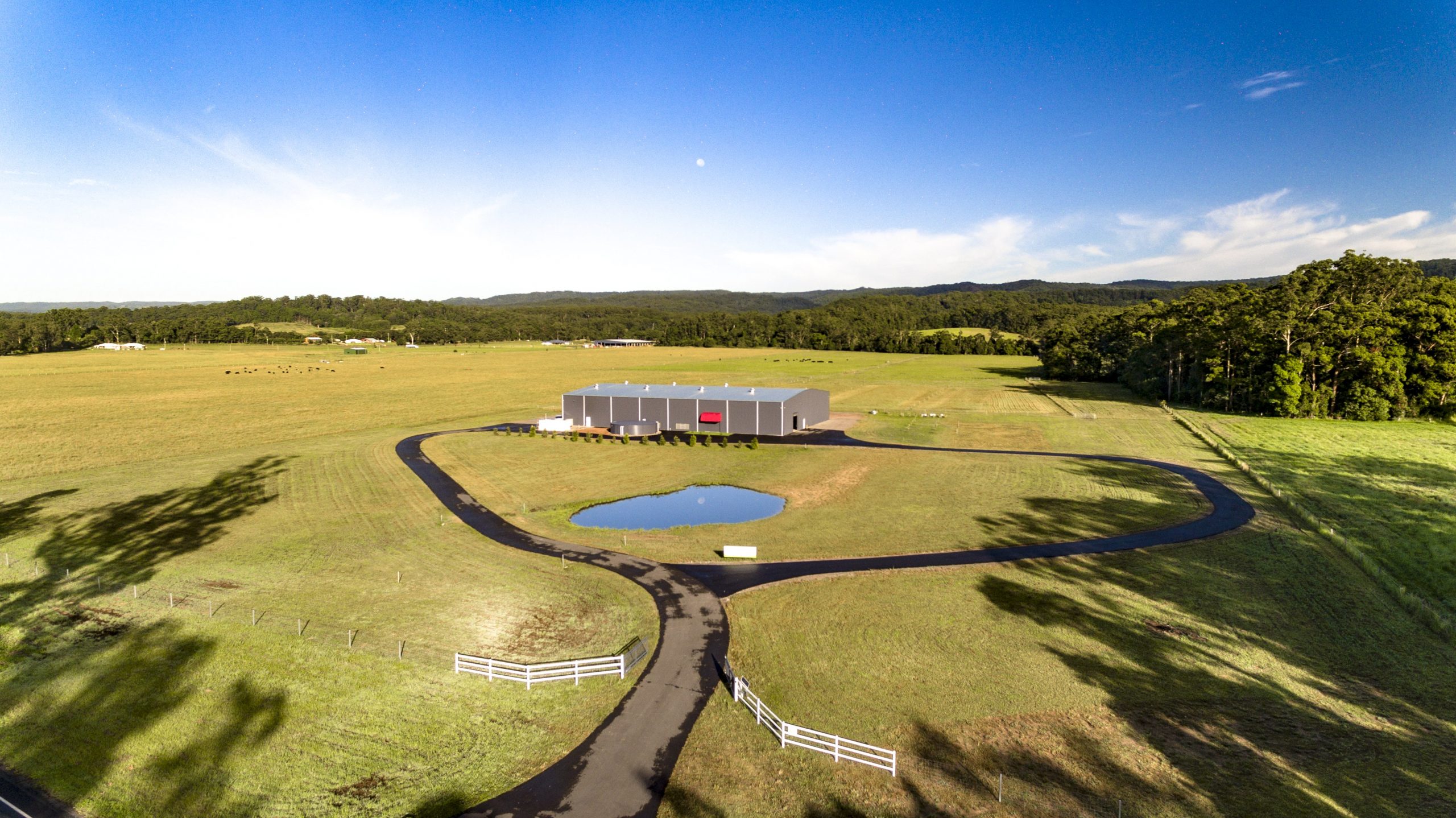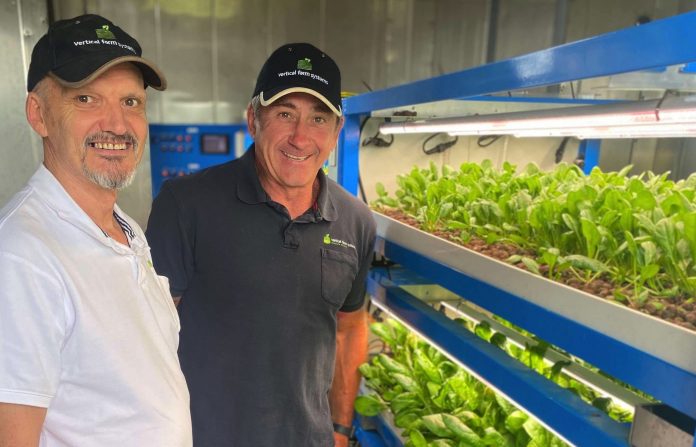The future of farming lies in a shed in the Sunshine Coast hinterland.
It is home to a concept that looks at growing from a completely different angle: up!
Sunshine Coast company Vertical Farming Systems, based in North Arm, is the only equipment seller in Australia providing fully-automated growing systems to producers around the globe.
The fully automated growing systems produce nutritious fresh food at scale, indoors, year round, without relying on skilled labour, favourable weather, high soil fertility or high-water use.
The business has signed a $55 million contract with a Canadian grower to use their system, which adds to other international partnerships in New Zealand, the USA and UK.
The vertical farming industry is worth an estimated $5 billion dollars annually in the US alone and it’s only just in its infancy here in Australia.
Design engineer John Leslie first began the concept in 2009 with business partner Ashley Thomson.
The team was one of the first involved in vertical gardening globally and has developed a system that can be set up anywhere in the world.
After nine years of intensive development and commercial testing, they developed the XA Series Warehouse System.

The framework and technology is manufactured in the North Arm warehouse before being exported, assembled and installed across the world.
The multi-level growing system uses rolling benches, flood and drain watering and low voltage LED lighting and the automated system controls water, sunlight and temperature and uses 95 per cent less water than traditional faming.
“What we found was that the people getting into vertical farming are not traditionally farmers,” Mr Leslie said.
“There is a huge uptake in vertical farming from entrepreneurs and property developers, or people who just are concerned about climate change and food security.
“So, we’ve built a system that doesn’t require a person be a farmer, yet they can grow the highest quality food that even organic farmers struggle to do when you add in factors like weather or drought.
“It’s really charging the way forward.”
Like stories about Sunshine Coast people doing great things? Help us deliver more by registering for our free daily news feed. All it requires is your name and email. See SUBSCRIBE at the top of this article
Mr Leslie said the pressures of climate change, land use and land availability was all contributing to a need for a farming solution close to where people lived.
He said vertical farms could be built in industrial warehouses or unused factory spaces and reduced the impact of food miles and produce transportation.
“Being able to put a vertical farm in any environment, anywhere in the world irrespective of climate or skill of people, or availability of fertile land, is rapidly becoming critical to maintaining the food chain.
“Vertical farming is bringing agriculture indoors and excluding Mother Nature to a certain extent so that all the conditions indoors mimic Mother Nature, but in an optimum way.

“Every day of the year in our facility it’s perfect sunshine, perfect temperature and perfect wind and rainfall and that is what increases our productivity enormously.”
Mr Leslie said, in theory, any crop could be grown in a vertical garden, but it was currently focused on leafy greens and herbs as they were fast-growing and commercially viable.
He said the indoor process was chemical free and that the growing conditions produced highly organic produce with up to 30 per cent more nutrients than traditionally grown stock.
“We are growing our crops in 28 days that, in the field, are taking 45 days.”
“There’s no sprays, pesticides or herbicides and we don’t have any pests or diseases so the quality of food is literally beyond organic.”
Local journalists supporting local people. Help keep independent and fair news coming by subscribing to our free daily news feed. All it requires is your name and email. See SUBSCRIBE at the top of this article.

The vertical farm system is currently powered by electricity, which restricted the ability to sustainably produce longer growing crops such as potatoes, but Mr Leslie said he was looking at new energy sources that could be implemented in the future.
“We’re always scanning for new technologies as the world develops new energy sources as we move away from a fossil fuel-based economy.”
“Any advances that are coming in the generation of electricity will only improve what we’re doing.”
The sky is the limit for this local success story, with the potential to develop a residential use system in the future.
Visit: verticalfarms.com.au.





